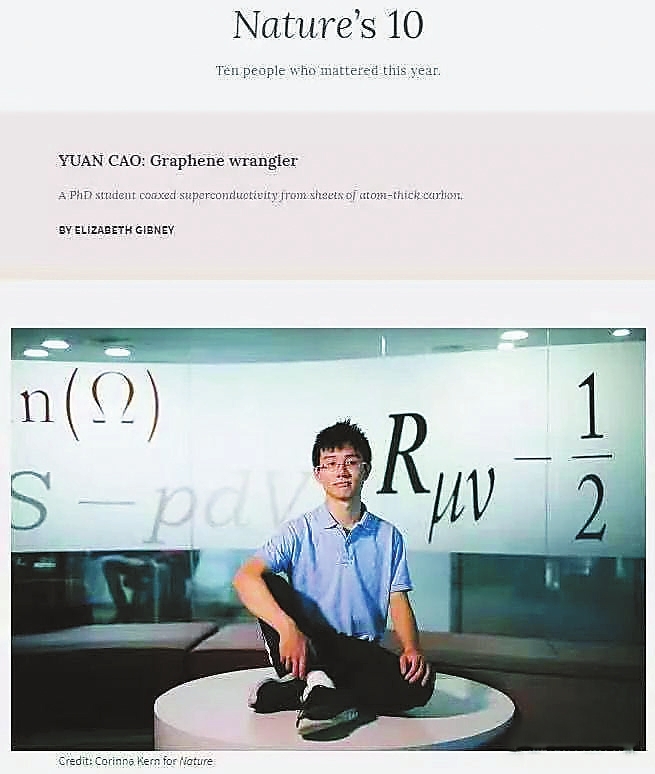
On May 6, Cao Yuan, a 24-year-old Shenzhen-born Ph.D. student in physics at the Massachusetts Institute of Technology (MIT), published in the journal Nature two papers on the latest breakthroughs made in the research of magic-angle grapheme . The first paper, with Cao as the first co-author, elaborated on an experimental attempt MIT researchers rolled out in controlling the twist of a magic-angle grapheme and introduced the structure to a wider range of two-dimensional research. The study has proved that the magic-angle grapheme structure can affect the interactions between electrons to achieve similarities in physical behaviors and has implemented a new grapheme structure in research for the first time, namely, the small-angle twisted bilayer-bilayer grapheme (TBBG). Cao was the first author and the joint corresponding author of the second paper. The researchers mapped the layout of the twisting angle of the grapheme structure. Through use of a nanoscale on-tip scanning superconducting quantum interference device (SQUID-on-tip), they obtained tomographic images of the Quantum Hall State at the Landau levels, and mapped the partial variations in hexagonal boron nitride (hBN)-encapsulated magic angle twisted bilayer grapheme (MATBG) devices with a relative precision better than 0.002 degrees and a spatial resolution of a few moiré periods. Cao detailed in the two papers published on March 5, 2018 in Nature with himself as the first authors that while stacking two layers of grapheme that are twisted relative to each other by a small angle of 1.1 degree, an unconventional superconducting reaction might occur, which marked the breaking discovery of the magic-angle grapheme. He kept updating his findings in leading journals such as Nature and Science, and was rated by Nature in 2018 as one of the top 10 influencial scientists in 2018. A physics prodigy born in 1995, Cao studied at Shenzhen Yaohua Experimental School in 2007 and finished all the curricula from Grade Six of primary school to high school in only three years. By 18, he had completed an undergraduate degree at the University of Science and Technology of China (USTC) in Hefei, Anhui Province and is now enrolled as a doctoral candidate at MIT. Cao had already shown his flair for physics in middle school, according to headmaster of Yaohua Experimental School. He had set up a well-equipped laboratory at home and was recruited in a special class together with other two students at the school. (Wang Haolan) | 
